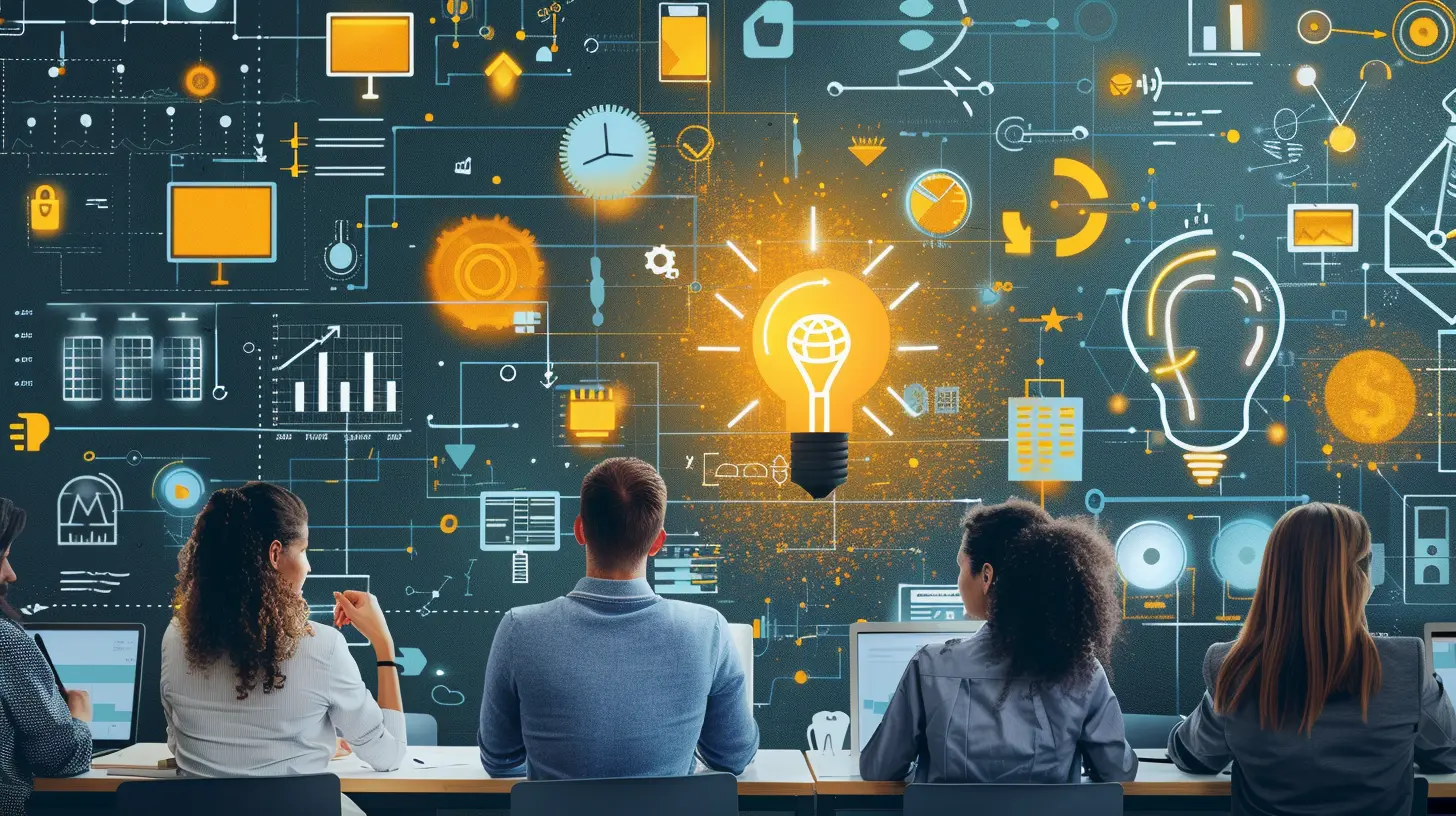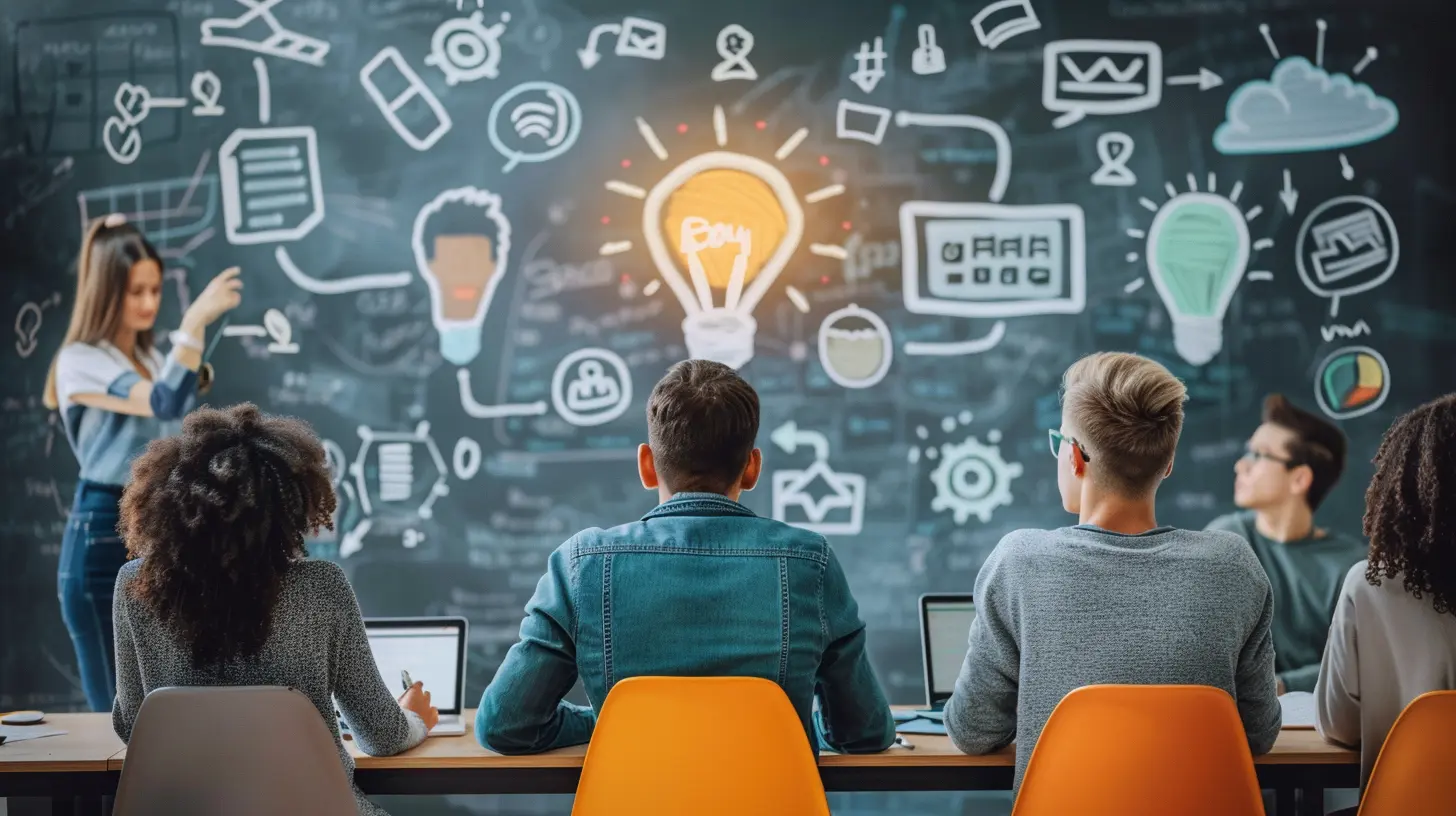The Future of Collaborative Learning: Trends and Innovations
23 November 2025
Education is evolving at an incredible pace, and collaborative learning is at the forefront of this transformation. Gone are the days when learning was a solitary activity confined to textbooks and silent classrooms. Today, students, educators, and professionals are embracing new ways of working together, fueled by technology and innovative teaching strategies.
So, what does the future hold for collaborative learning? Let's dive into the latest trends and innovations shaping the way we learn and interact in educational settings.

What is Collaborative Learning?
Before we jump into the future, let's get on the same page about what collaborative learning really means. At its core, collaborative learning is all about teamwork. It encourages students to engage with one another, discuss ideas, solve problems together, and build upon each other's knowledge.Think of it like a group project—but instead of one person doing all the work (we’ve all been there), everyone actively contributes in a meaningful way. This method not only enhances understanding but also boosts critical thinking, communication, and problem-solving skills.

Why is Collaborative Learning So Important?
Collaboration is a skill that extends far beyond the classroom. In the real world, whether in business, science, or technology, people rarely work in isolation. Employers value teamwork, communication, and the ability to work well with others. By incorporating collaborative learning into education, we're preparing students for success in their careers and beyond.
The Future of Collaborative Learning: Key Trends and Innovations
From AI-powered tools to virtual classrooms, the landscape of collaborative learning is undergoing a major shift. Let’s take a look at the most exciting trends shaping the future of education.1. Virtual and Augmented Reality Learning Environments
Imagine stepping into a virtual history lesson where you can walk the streets of ancient Rome or conducting a science experiment in a fully immersive 3D lab. Sounds futuristic, right? Well, it's closer than you think.- Virtual Reality (VR) allows students to engage with learning materials in a fully immersive environment. They can explore historical sites, conduct complex experiments, or even practice real-world skills like surgery or engineering.
- Augmented Reality (AR) overlays digital content onto the real world, creating interactive learning experiences. Think of an anatomy lesson where students can see and manipulate a 3D model of the human body right in front of them.
These technologies enable students to collaborate without geographical barriers, making learning more hands-on and engaging than ever before.
2. AI-Powered Learning Assistants
Artificial Intelligence (AI) is not just a buzzword—it’s actively transforming education. AI-driven tools are making collaborative learning more personalized, efficient, and accessible.- Smart AI tutors provide instant feedback and support, ensuring no student is left behind.
- AI-powered language translation tools allow students from different linguistic backgrounds to collaborate seamlessly.
- Adaptive learning platforms analyze student performance and tailor content accordingly, ensuring an individualized learning experience.
With AI assisting in education, students can focus on meaningful discussions, problem-solving, and creativity while the tech handles the repetitive tasks.
3. Cloud-Based Collaboration Tools
Remember the hassle of emailing files back and forth while working on group projects? Fortunately, those days are fading away thanks to cloud-based collaboration tools.Platforms like Google Workspace, Microsoft Teams, and Slack allow students and educators to share documents, communicate in real time, and work on projects simultaneously—no matter where they are. This fosters a more dynamic learning environment and ensures that collaboration happens seamlessly.
4. Gamification in Collaborative Learning
Who said learning can’t be fun? Gamification—integrating game elements into education—has proven to be a game-changer in collaborative learning.- Leaderboards and point systems encourage friendly competition among students.
- Educational games and simulations make learning more interactive and memorable.
- Team-based challenges promote problem-solving and teamwork.
By tapping into students' natural desire for competition and achievement, gamification makes learning more engaging while reinforcing key concepts.
5. Social Learning and Online Communities
Learning doesn’t just take place in the classroom—it happens everywhere, and social media is playing a crucial role in this shift.- Platforms like Reddit, Quora, and LinkedIn Learning create spaces where students and professionals can ask questions, share knowledge, and collaborate on projects.
- Online study groups and discussion forums allow learners to interact, exchange ideas, and solve problems collectively.
These digital communities foster peer-to-peer learning, ensuring that students always have a network of support, no matter where they are.
6. The Rise of Peer-to-Peer Learning
Traditional teaching often follows a one-way street, where educators deliver information and students passively absorb it. But peer-to-peer learning flips this model on its head.- Students teaching one another helps reinforce concepts and develop communication skills.
- Mentorship programs allow older students or industry professionals to guide beginners in their learning journey.
- Crowdsourced learning materials (such as open-source textbooks and study guides) make education more accessible and inclusive.
By allowing students to take an active role in their own learning, peer-to-peer education fosters deeper understanding and long-term retention.
7. Hybrid Learning Models
The pandemic reshaped education, proving that learning isn’t confined to physical classrooms. Hybrid learning—a mix of in-person and online education—is becoming the norm.- Students collaborate in both virtual and face-to-face settings, making learning more flexible and accessible.
- Asynchronous learning tools allow students to study at their own pace while still participating in group activities and discussions.
- Blended learning incorporates digital elements, such as interactive videos and quizzes, to enhance the in-class experience.
This approach offers the best of both worlds, making education more adaptable to different learning styles and needs.

Challenges and Considerations
Of course, with all these advancements, there are challenges to consider:- Digital divide: Not all students have equal access to technology, creating disparities in collaborative learning opportunities.
- Distractions and misinformation: With access to endless information, students need guidance in critical thinking and digital literacy.
- Teacher training: Educators must adapt to new tools and teaching methods to effectively facilitate collaborative learning.
Thankfully, as awareness grows, so do efforts to address these challenges and ensure that collaborative learning benefits everyone.
Final Thoughts: The Future is Collaborative
The future of collaborative learning is bright, driven by innovation and the growing recognition of teamwork as a critical skill. With technology breaking down barriers and redefining traditional education, learning is becoming more interactive, engaging, and inclusive.As we move forward, it's essential to embrace these changes and create an educational landscape that encourages creativity, problem-solving, and meaningful collaboration. Because, at the end of the day, learning is better when we do it together.
all images in this post were generated using AI tools
Category:
CollaborationAuthor:

Fiona McFarlin

